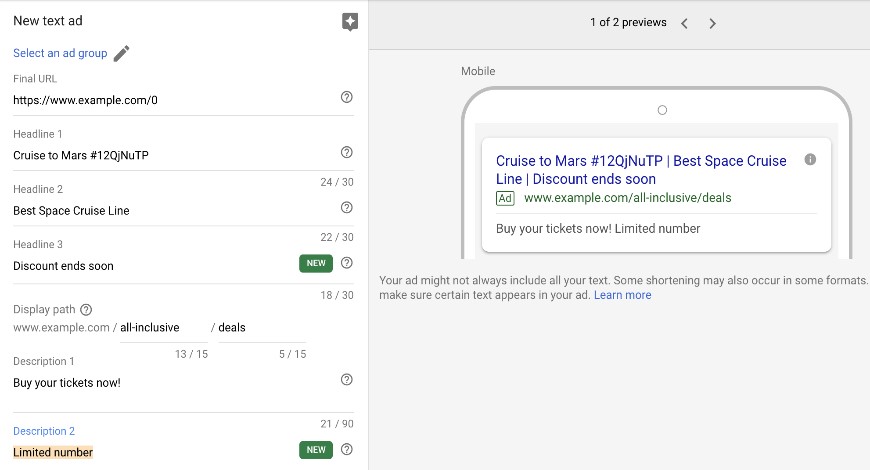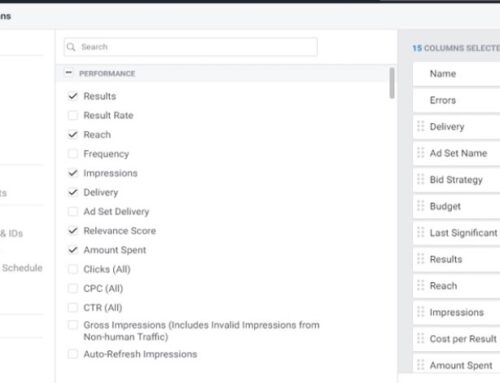Expanded Text Ads will be gone
Following the latest news from Google, they will be officially sunsetting Expanded Text Ads (ETA) by June 2022. This means that advertisers will no longer be able to add or edit their ETAs after June 2022. This update is a very big one and at Samurai PPC, we have anticipated it to happen. Google has always been driving its company toward increased automation and data-driven. It’s the world where machines are given priority to make decisions over humans. And the human’s role will be to “guide and drive the machine”. This update will affect almost all ad accounts across the board, as most accounts actively make use of ETA as part of their ads structure.
If you look at our earlier posts a few months ago, I have discussed and foreshadowed the impending update. The only thing I did not expect was the timing of when it will happen. I was expecting ETA to be here for at least a few more years. But now, Google is giving us 9 months to prepare for the transition. Also, across our clients’ accounts, RSAs have always gotten most of the traffic anyway.
What is likely to happen after June 2022?
There is no news of any new ad format to replace ETAs, so it’s expected that advertisers can only create RSAs moving forward. How many RSAs per ad group? Google did not specify, all they said is to “have at least one responsive search ad in every ad group in your Search campaigns by June 30, 2022.”
“Have at least one.” Ok, so we may even be allowed to use multiple RSAs per ad group. The only reason for this may be to test different ad messaging. It’s like a multivariate form of ad testing. Even though it’s a valid argument that given 15 headlines, we should be able to mix different messaging with 1 RSA. 1 test method I believe is viable is testing pinned vs unpinned ads.
As of now, I cannot think of any other ways that would justify using multiple RSAs per ad group. Leaving out ETA will greatly simplify our ad group structure. I hope to update you on this in the future, as we approach closer to the transition.
How to optimize search ads moving forward
Google has recommended a few ways to work with RSAs moving forward. Most of these are self-explanatory. PPC specialists have a new role that is more pointed toward overall strategy than manual input when it comes to dealing with search ads.
1. Repurpose high-performing content from your expanded text ads and focus on Ad strength.
After collecting sufficient data, RSAs are graded on 3 levels: Average, Good, Excellent. Optimizing ad texts by replacing average assets is one way of optimizing for RSAs. Advertisers who improve Ad strength for their responsive search ads from ‘Poor’ to ‘Excellent’ see 9% more clicks and conversions on average.
2. Check your account’s Recommendations page.
These customized suggestions can help you quickly add or improve responsive search ads.
3. Pin headlines or descriptions to specific positions in your responsive search ads.
This is useful if you have certain messages that always need to be shown. If you need to use pinning, try to pin at least 2-3 options to a position. This is where we have a testing idea. You can test 2 different RSAs, one with pinned texts and one without. In this way, you find out whether your input or the machine learning can perform better by itself. Its may be valuable as most brands think they know what customers look for, and sometimes machine may present a better alternative.
4. Use ad variations.
This can help you test different versions of your assets at scale and review their performance across multiple campaigns.
5. Evaluate the success of your ads based on incremental impressions, clicks, and conversions your ad groups and campaigns receive.
Responsive search ads help you qualify for more auctions, so ad-level performance and metrics like clickthrough rate and conversion rate may not paint a full picture of your performance.
Why it is important?
The future of the internet advertising landscape is heading toward 2 things – Automation and Data-driven. In the midst of all, scalability is a driving force behind these updates as well. With scalability in automation that makes decisions based on data, advertisers will spend less time fidgeting with outdated stuff like pivot tables and optimizing large excel sheets, instead they will be alleviated of the task and start thinking about their clients overall brand strategy and messaging theme, while also meeting audiences at key levels of the buying funnel. Things like setting up retargeting at various levels, capturing first-party data, advising on our client’s websites are still important and cannot be done by machines.
As ad platforms increasingly make decisions from the data it receives, we must continue to facilitate this process, by ensuring the most relevant data are passed to Google Ads as users click and traverse on our sites.
The modern advertisers’ work is far from over. We are seeing a shift in the game, but the measurement of your success is still the same – making advertising profitable.





